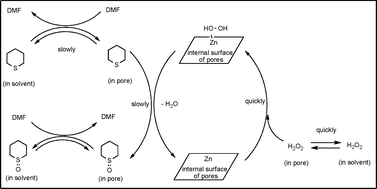Homogeneous and heterogeneous catalyticoxidation of sulfides by H2O2 over zinc(ii) compounds†
Abstract
It has been recently shown that

* Corresponding authors
a
Boreskov Institute of Catalysis, SB RAS, Novosibirsk, Russia
E-mail:
anuzhdin@catalysis.ru
Fax: (+7) 383 3308056
Tel: (+7) 383 3269410
b Nikolaev Institute of Inorganic Chemistry, SB RAS, Novosibirsk, Russia
It has been recently shown that

 Please wait while we load your content...
Something went wrong. Try again?
Please wait while we load your content...
Something went wrong. Try again?
A. L. Nuzhdin, D. N. Dybtsev, V. P. Fedin and G. A. Bukhtiyarova, Dalton Trans., 2009, 10481 DOI: 10.1039/B914355F
To request permission to reproduce material from this article, please go to the Copyright Clearance Center request page.
If you are an author contributing to an RSC publication, you do not need to request permission provided correct acknowledgement is given.
If you are the author of this article, you do not need to request permission to reproduce figures and diagrams provided correct acknowledgement is given. If you want to reproduce the whole article in a third-party publication (excluding your thesis/dissertation for which permission is not required) please go to the Copyright Clearance Center request page.
Read more about how to correctly acknowledge RSC content.
 Fetching data from CrossRef.
Fetching data from CrossRef.
This may take some time to load.
Loading related content
